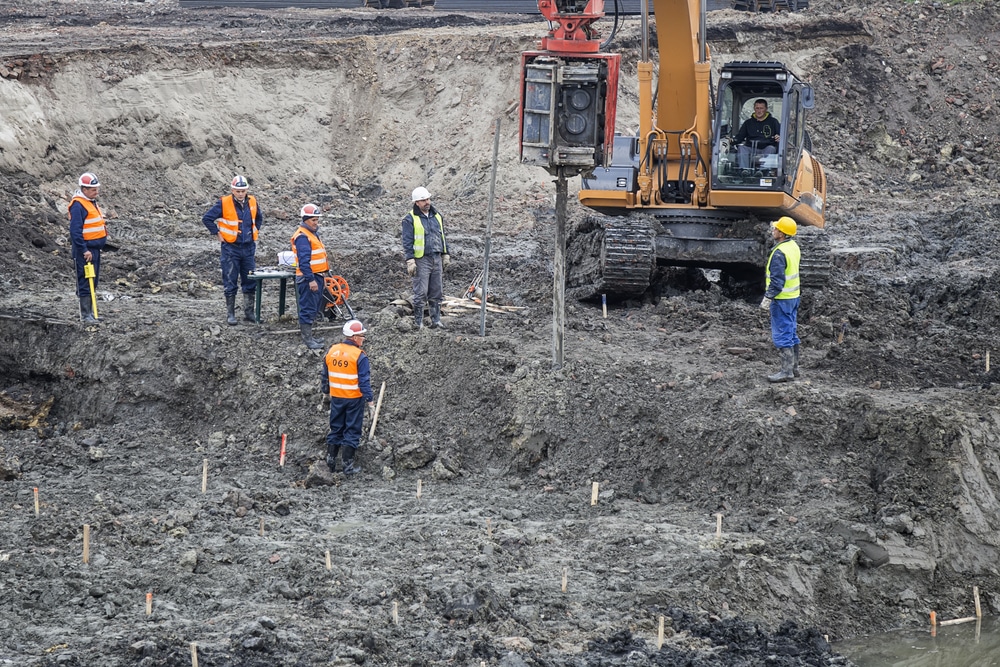Leading Consulting Civil Engineering Companies for Framework Projects
Leading Consulting Civil Engineering Companies for Framework Projects
Blog Article
An In-depth Examination of the Solutions Offered by Consulting Engineers in the Area of Geotechnical Engineering: From Website Investigation to Job Implementation
Consulting engineers in geotechnical engineering play a critical function in the effective implementation of building tasks, starting with thorough website examinations that disclose critical subsurface conditions. Their proficiency extends to soil home evaluations, environmental impact assessments, and the careful monitoring of project implementation, ensuring placement with safety and security and sustainability criteria.
Importance of Geotechnical Design
Geotechnical design is an essential technique that underpins the security and sustainability of civil infrastructure tasks. By recognizing the mechanical habits of dirt and rock materials, geotechnical designers examine the suitability of websites for various buildings, consisting of structures, bridges, and dams. This fundamental evaluation ensures that frameworks can hold up against ecological factors and tons without experiencing failing.
The relevance of geotechnical design prolongs beyond plain structural safety; it additionally includes environmental stewardship. Correct geotechnical evaluations contribute to decreasing the environmental impact of construction. Via careful examination of soil homes and groundwater conditions, designers can design structures and keeping frameworks that reduce threats such as erosion and landslides, advertising long-term security.
Moreover, geotechnical design plays a vital function in project expense monitoring. geotechnical works. By determining possible issues early in the style stage, engineers can advise suitable options, thus preventing pricey delays and redesigns during building and construction. This positive technique not just enhances job performance but likewise dramatically decreases dangers linked with unexpected website problems
Website Investigation Methods
Reliable site investigation methods are crucial for gathering precise data regarding subsurface problems before construction. These techniques help with the understanding of the geological and hydrological setting, which is critical for guaranteeing the security and safety and security of recommended frameworks.
Common methods employed in website examinations consist of borehole exploration, which permits designers to extract dirt samples at various depths, providing insights into stratification and material kinds. In enhancement, geophysical studies, such as seismic refraction and electric resistivity, deal non-invasive methods to analyze subsurface features over bigger locations. These approaches can aid recognize abnormalities without substantial excavation.
Examination pits are an additional valuable technique, providing straight observation of soil layers and enabling in-situ testing. geotechnical works. This method is particularly helpful for superficial excavations and can assist evaluate groundwater degrees. Cone infiltration examinations (CPT) are increasingly made use of, as they supply constant profiles of dirt resistance, which helps in determining dirt stamina and layering.
Each of these techniques plays an essential function in developing a comprehensive understanding of website conditions, enabling consulting designers to make informed choices and suggestions throughout the task lifecycle. Precise data collection throughout the site examination phase is essential to mitigating risks and making certain successful task application.
Dirt Building Evaluation

The evaluation procedure commonly entails a combination of laboratory tests and field additional hints investigations. Secret residential properties such as shear toughness, compressibility, leaks in the structure, and moisture content are evaluated to identify the soil's suitability for construction purposes. Conventional tests, including the Atterberg limitations, Proctor compaction, and triaxial shear tests, are typically employed to gather information on soil behavior.
In addition to these tests, in-situ methods such as the Criterion Infiltration Examination (SPT) and Cone Infiltration Test (CPT) provide important insights into dirt stratigraphy and thickness. The results of these explanation evaluations inform engineers concerning possible difficulties, such as soil liquefaction or settlement, allowing them to create proper mitigation strategies.
Environmental Impact Analysis
Ecological influence assessment plays a crucial duty in the preparation and execution of engineering projects, especially in geotechnical engineering. This process entails analyzing the prospective environmental effects of suggested projects on dirt, water, air high quality, and surrounding ecosystems. Consulting designers utilize numerous methods, including website evaluations, modeling, and area research studies, to identify and evaluate these impacts.
The analysis normally begins with the recognition of baseline ecological conditions, which acts as a reference for predicting possible changes. Designers analyze variables such as erosion, groundwater contamination, and environment disruption, making sure that all relevant environmental laws and guidelines are stuck to throughout the project lifecycle. Stakeholder interaction is additionally an essential component of the evaluation procedure, as it cultivates communication between task developers, regional areas, and regulatory bodies.
Moreover, reduction strategies are established to resolve identified impacts, enabling designers to propose alternatives or adjustments to predict layouts that enhance sustainability. This positive technique not just minimizes unfavorable impacts on the setting yet also promotes public count on and conformity with ecological regulation. Inevitably, reliable environmental impact assessment enhances the general stability and feasibility of geotechnical design tasks, sustaining liable growth techniques.
Task Application and Tracking

Monitoring is an essential element of project application. Designers use numerous methods, such as instrumentation and area tests, to examine soil habits and architectural reactions in real-time. This continual monitoring allows the identification of any type of inconsistencies from expected efficiency, permitting for timely interventions to alleviate dangers.
Additionally, seeking advice from engineers maintain open communication with contractors and stakeholders throughout the process. Regular site assessments and progress reports make sure that all events are informed about job standing and any kind of emerging issues. By promoting cooperation and openness, consulting designers assist in an extra effective implementation process, therefore boosting project results.
Inevitably, reliable job execution and surveillance not just copyright safety and quality standards but likewise contribute to the general success of geotechnical jobs, ensuring they satisfy their desired purposes sustainably and responsibly.

Final Thought
In conclusion, the function of consulting designers in geotechnical engineering includes a crucial series of solutions that guarantee task success. Ultimately, the diverse payments of speaking with designers are vital in resolving the complexities of geotechnical difficulties in modern-day engineering jobs.
Report this page